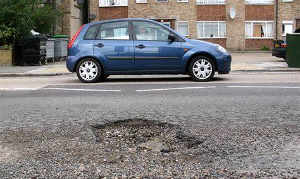Crawford shares advice on managing lithium-ion battery risks

Crawford shares advice on managing lithium-ion battery risks | Insurance Business Australia
Insurance News
Crawford shares advice on managing lithium-ion battery risks
Call to action comes amid concerns about such batteries’ potential to cause fires
Insurance News
By
Roxanne Libatique
Crawford & Company bosses have urged insurers and underwriters to take proactive measures in assessing and mitigating risks related to lithium-ion batteries.
The call to action comes amid growing concerns about these batteries’ potential to cause fires.
Lithium battery-related fires in Australia
Crawford noted recent incidents:
In the Lake Macquarie region, a fire led to two fatalities, marking New South Wales’s first deaths attributed to a “lithium-ion fire.”
In Victoria, a fire started by a mobile phone power bank rapidly spread through a university dormitory.
To address the growing risk, the Federal Government issued a national product safety notice, following an Australian Competition and Consumer Commission (ACCC) recommendation, alerting consumers to fire risks linked to recalled LG solar lithium-ion batteries in solar energy systems.
The ACCC estimates that by 2026, each Australian household will contain an average of 33 devices powered by lithium-ion batteries, illustrating the extent of these batteries’ integration into everyday life.
Are lithium-ion batteries victims or villains?
Chris Bennett (pictured above left), head of motor, fusion and virtual claims at Crawford, emphasised that lithium-ion batteries are more often victims than villains in fire incidents.
“The reality is that burnt-out lithium-ion batteries are found within most fire scenes today, not because they are necessarily the cause of the fire, but because lithium-ion batteries are found in almost every Australian home,” he said.
Jon Stagg (pictured above right), senior general liability adjuster, noted that when fires involve lithium-ion batteries, they are usually linked to user error, mechanical damage, or charging behaviour, rather than manufacturing defects.
“We hear the term ‘lithium-ion battery fire’ used a lot but it can be quite unhelpful because of the perception it creates; that terminology alludes to the fact that the battery started the fire, when in reality, the expert investigators find it very difficult to confirm if batteries are the cause, or simply present where another ignition source was primary,” he said.
Crawford & Company calls for a balanced approach to lithium-ion battery issues
Bennett advocates for a balanced approach, recognising the importance of awareness about the risks associated with lithium-ion batteries while cautioning against alarmist narratives.
“The attention that lithium-ion batteries have been getting of late is good on the one hand as it brings into consciousness some of the issues we need to be alive to, and then as society we are better informed to make decisions about how to manage the risks. However, there’s a bit of alarmist commentary going on in Australia at the moment, and if that catches on, it’s not going to lead to good environmental outcomes which these batteries unquestionably help deliver through things like electric scooters and cars,” he said.
Lithium battery-related challenges facing insurers
Insurers face unique challenges with lithium-ion batteries. Bennett pointed out that destroyed batteries leave little material for investigations, limiting recovery opportunities. Additionally, high repair costs for electric vehicles, due to limited parts and expertise, pose further hurdles.
Stagg suggests that underwriters consider policy modifications to manage risk, such as setting conditions for safe battery storage and purchasing from reputable sources.
“Rather than blanket exclusions for events linked to this activity, placing certain conditions on policies could be considered as a way for insurers to mitigate their risk. Things like having clear parameters around safe battery storage, as well as conditions to ensure people purchase traceable batteries from reputable sources and brands and adhere to manufacturers’ guidelines,” he said.
Related Stories
Keep up with the latest news and events
Join our mailing list, it’s free!






